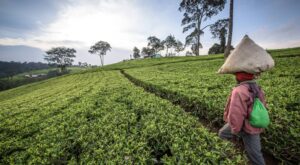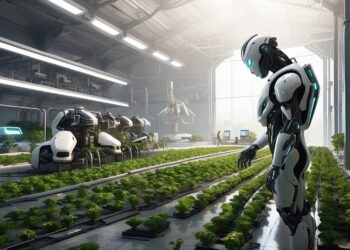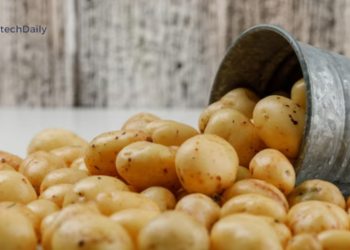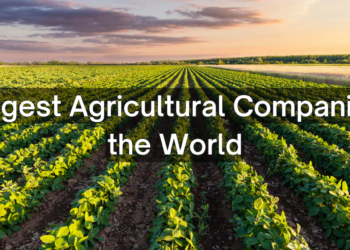Agriculture is a key driver of rural economies, providing livelihoods and natural resources for millions. It must also be resilient to changing climatic conditions, which will make it more difficult for farms to produce crops at the same cost and quality as before.
Different types of agriculture systems have been developed to address the challenge of harvesting crops in a sustainable way.
Precision Agriculture
Precision Agriculture is the use of information and technology to increase crop yields and improve quality. The goal of Precision Farming is to increase efficiency and profitability through the use of sensors and information systems. The objective is to automate many of the tasks that are done manually with the goal of increasing productivity and output.
Some examples of Precision Farming systems include –
- Precision Planting – Using sensors to determine the optimum planting date, depth, and variety to maximize output.
- Precision Irrigation – Sensors can determine the soil moisture and its rate of evaporation. It can be adjusted to save water.
- Precision Soil Analysis – Sensors can measure soil nutrients such as nitrogen and phosphorous that are essential for growth and yield.
- Precision Harvest – Using sensors to know when to harvest the crop with minimal loss.

Drone Farming
Drones have become a popular option for farmers wanting to automate their work. This is due to the fact that they are capable of performing work autonomously whereas previously this was only done by humans. There are a variety of drones that are suitable for different farming needs.
Some of these include –
- Sustainable and Eco-Friendly Farming – Drones can be used to monitor pests and weeds. They can be fitted with sensors to detect specific threats and act accordingly. This can be done from a remote location, reducing the risk of damage to plants and crops.
- Precision Planting – Drones can be used for precision planting. The operator can take pictures of the field and send them to the drone to ensure that the seeds are placed in the right place. The drone is also capable of collecting data like soil moisture content and wind speed, which can be used to minimize energy consumption.
- Precision Harvesting – Drones can be used for precision harvesting. The operator can take pictures of the field and send them to the drone to help determine when to harvest. The drone is also capable of collecting data like soil moisture content and wind speed, which can be used to minimize energy consumption.
Ground Based Farming
Ground-based farming is a technique that is used to grow crops indoors. This is advantageous as it allows the crops to be grown in controlled conditions that are not available outdoors. This can be helpful for producers that need to ensure that their crops do not get affected by weather conditions like rain.
Some of the ground-based farming solutions that are available include –
- LED Grow Lights – LED grows lights are a growing solution for indoor agriculture. These grow lights are capable of producing the right amount of light for the plants to grow. These can be controlled using a remote system that can be used for scheduling the when and the amount of light that is required by the plants.
- Temperature Controls – Temperature controls are used to ensure that optimal temperatures are maintained for the growth of the crops. These can be controlled using a remote system, which can be useful for scheduling the when and the amount of light that is required by the plants.
- Humidity Controllers – Humidity controllers are used to maintaining the right level of humidity for the growth of crops. These can be controlled using a remote system, which can be useful for scheduling the when and the amount of light that is required by the plants.
- Rain Water Collectors – Rainwater collectors are used to collect the excess rainwater that falls on the crops. These can be controlled using a remote system, which can be useful for scheduling the when and the amount of light that is required by the plants.

Sensor-based Farming
Another way to increase the efficiency of the farming process is through the use of sensors. These sensors are used to collect data about the state of the crops such as soil moisture levels, temperature, and light intensity. Once the data is collected, it can be sent to a remote cloud-based system that can be used for monitoring the progress of the crops and tracking their daily growth.
Some of the sensor-based farming solutions include –
- Remote Monitoring Systems – Remote monitoring systems can be used for monitoring the progress of crops. These can be used for scheduling the when and the amount of light that is required by the plants. The operators can also receive alerts if there are any issues that need immediate attention.
- Weather Sensors – Weather sensors are used to track the current weather conditions and act accordingly. This can be used to collect data like soil moisture content and wind speed, which can be used to minimize energy consumption.
- Insect Sensors – Insect sensors can be used to collect data about the insect populations that are present in the field. This can be used to track their growth and predict when they will cause damage to the crops.
- Plant Sensors – Plant sensors are used to collect data about the health of plants. This can be used to track their growth, predict when they will exhaust their nutrients, and take corrective action.
Smart Planting Robots
Another way that farming practices are being automated is through the use of planting robots. These robots can be used to perform the same tasks that are done manually by humans such as planting seeds, applying fertilizer, and watering the crops.
Some of the planting robots that are available include –
- Spraying Robot – Spraying robots can be used to apply pesticides on crops. They can be controlled using a remote system that can be used for scheduling the when and the amount of light that is required by the plants.
- Seed Sorting Robot – Seed sorting robots can be used to sort out the seeds from the soil and then place them in their appropriate bags. This can be done in a neat and organized manner. The robot can be controlled using a remote system that can be used for scheduling the when and the amount of light that is required by the plants.
- Irrigation Robot – Irrigation robots can be used for watering crops. They are capable of collecting data about the soil moisture levels, which can be sent to a remote cloud-based system that can be used for monitoring the progress of the crops and tracking their daily growth.

Future of Agriculture: AI and Robot Farms?
As the world becomes more urban, it will require more resources from the agricultural sector. The only way to achieve this goal is to develop more sustainable farming practices that are able to cope with changing climatic conditions. Precision Agriculture and Drone Farming can help to increase yields, reduce the use of resources, and improve the health and safety of workers.
However, the most challenging task will be to implement AI solutions in the field of agriculture. To achieve this goal, the agricultural sector will need to adopt the new technologies, gather needed data, and train farm workers on the new methods. With the help of AI, robots, and sensors, the farming process will become more efficient and cost-effective.













